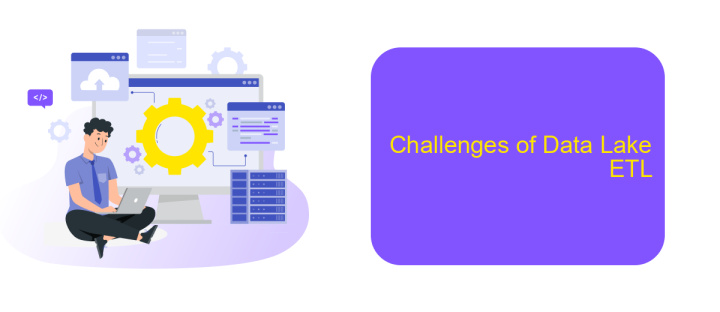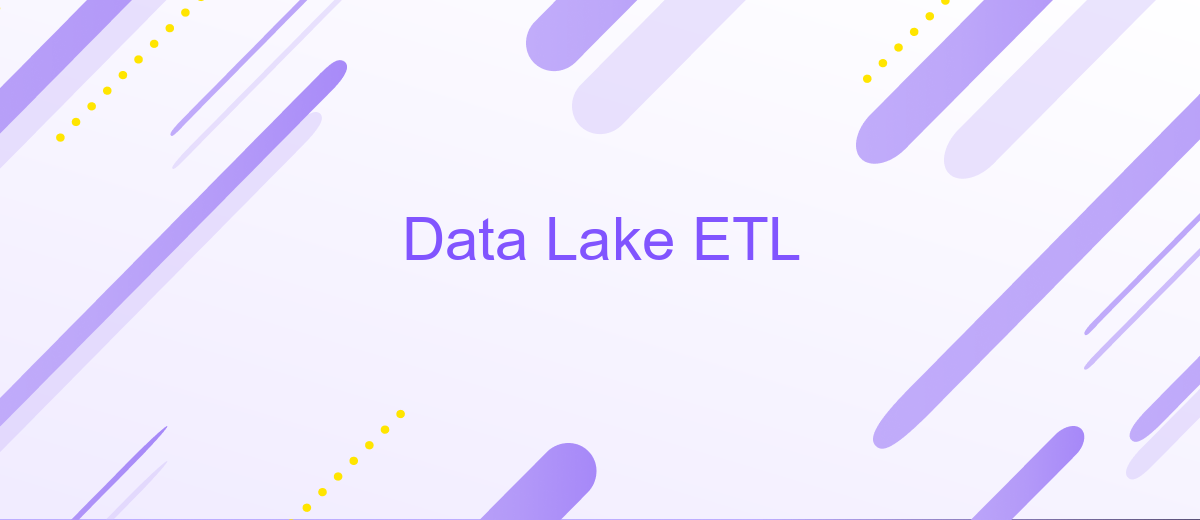Data Lake ETL
A Data Lake ETL (Extract, Transform, Load) process is essential for managing and analyzing vast amounts of unstructured and structured data. By efficiently extracting raw data from various sources, transforming it into a usable format, and loading it into a centralized repository, organizations can leverage advanced analytics and gain actionable insights, driving better decision-making and operational efficiency.
Introduction
Data Lake ETL (Extract, Transform, Load) is a crucial process for managing and analyzing large volumes of data. As organizations accumulate vast amounts of structured and unstructured data, efficient ETL processes become essential for transforming raw data into actionable insights. Data Lakes offer a scalable and flexible solution for storing diverse data types, making them an ideal choice for modern data architectures.
- Extraction: Gathering data from various sources.
- Transformation: Converting data into a usable format.
- Loading: Moving transformed data into a Data Lake.
Integrating multiple data sources can be challenging, but tools like ApiX-Drive simplify this process. ApiX-Drive enables seamless integration by automating data transfers between various platforms, ensuring that your Data Lake is continuously updated with the latest information. This automation not only saves time but also reduces the risk of errors, making it easier for organizations to maintain a reliable and up-to-date data repository.
Data Lake ETL Overview

Data Lake ETL (Extract, Transform, Load) is a crucial process in managing and analyzing large volumes of data from various sources. It involves extracting raw data from multiple origins, transforming it into a structured format, and loading it into a data lake for storage and future analysis. This process ensures that data is clean, consistent, and ready for analytical tasks, enabling organizations to make informed decisions based on comprehensive datasets.
Efficient ETL processes are essential for maintaining the integrity and usability of data lakes. Tools like ApiX-Drive can be instrumental in automating and streamlining these integrations. ApiX-Drive facilitates seamless data flow between various platforms, reducing the complexity of manual data handling. By leveraging such services, businesses can enhance their data management capabilities, ensuring that their data lakes are populated with accurate and up-to-date information, ready for advanced analytics and business intelligence applications.
Benefits of Data Lake ETL

Data Lake ETL offers numerous advantages for organizations looking to manage and analyze vast amounts of data efficiently. By leveraging the capabilities of Data Lake ETL, businesses can streamline their data processing workflows and gain valuable insights from their data assets.
- Scalability: Data Lake ETL can handle large volumes of structured and unstructured data, making it ideal for growing businesses.
- Cost-Effectiveness: Storing data in a data lake is often more affordable than traditional data warehouses, reducing overall data management costs.
- Flexibility: Data lakes support a wide range of data formats and sources, allowing for more comprehensive data analysis.
- Real-Time Processing: With tools like ApiX-Drive, Data Lake ETL can integrate and process data in real-time, providing up-to-date insights.
- Enhanced Data Governance: Data Lake ETL solutions offer robust data governance features, ensuring data quality and compliance.
Implementing Data Lake ETL enables organizations to harness the full potential of their data, driving better decision-making and operational efficiency. By using services like ApiX-Drive, businesses can easily integrate various data sources and automate their ETL processes, ensuring seamless and accurate data flow across their systems.
Challenges of Data Lake ETL

Data Lake ETL processes face several challenges that can complicate data management and analysis. One of the primary issues is the sheer volume of data, which can be overwhelming and difficult to handle without proper infrastructure. Additionally, the variety of data formats and sources adds complexity to the ETL process, requiring robust tools and strategies to ensure seamless integration.
Another significant challenge is maintaining data quality and consistency. As data flows from multiple sources, discrepancies and errors can arise, leading to inaccurate analysis and insights. Moreover, ensuring data security and compliance with regulations such as GDPR is crucial, particularly when dealing with sensitive information.
- Handling large volumes of data
- Integrating diverse data formats and sources
- Ensuring data quality and consistency
- Maintaining data security and compliance
To address these challenges, tools like ApiX-Drive can be invaluable. ApiX-Drive simplifies the integration process by connecting various data sources and services, making it easier to manage and transform data. By automating these tasks, organizations can focus on deriving meaningful insights from their data lakes, ultimately driving better decision-making and business outcomes.
- Automate the work of an online store or landing
- Empower through integration
- Don't spend money on programmers and integrators
- Save time by automating routine tasks
Best Practices for Data Lake ETL
Implementing ETL processes for a Data Lake requires careful planning and execution to ensure data integrity, scalability, and performance. One best practice is to establish a robust data ingestion framework that can handle diverse data sources and formats. Utilizing tools like Apache Kafka for real-time data streaming and batch processing can enhance the efficiency of data ingestion. Additionally, employing data validation and cleansing mechanisms during the ETL process helps maintain high data quality and accuracy.
Another crucial aspect is to automate and monitor ETL workflows to minimize manual intervention and reduce errors. Services like ApiX-Drive can be invaluable for integrating various data sources and automating data transfers seamlessly. It is also essential to implement comprehensive logging and alerting systems to quickly identify and resolve issues. Finally, ensure that the Data Lake architecture is designed for scalability to accommodate growing data volumes and evolving business needs, leveraging cloud-based solutions like AWS or Azure for flexible storage and compute resources.
FAQ
What is a Data Lake ETL?
What are the main benefits of using a Data Lake ETL?
How do I automate the ETL process for a Data Lake?
What challenges might I face when implementing a Data Lake ETL?
Can I use a Data Lake ETL for real-time data processing?
Strive to take your business to the next level, achieve your goals faster and more efficiently? Apix-Drive is your reliable assistant for these tasks. An online service and application connector will help you automate key business processes and get rid of the routine. You and your employees will free up time for important core tasks. Try Apix-Drive features for free to see the effectiveness of the online connector for yourself.


